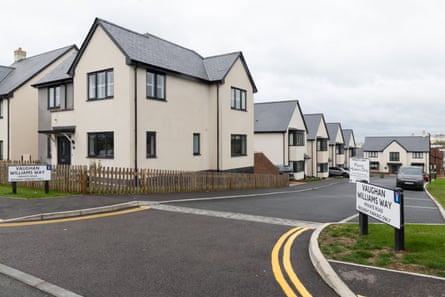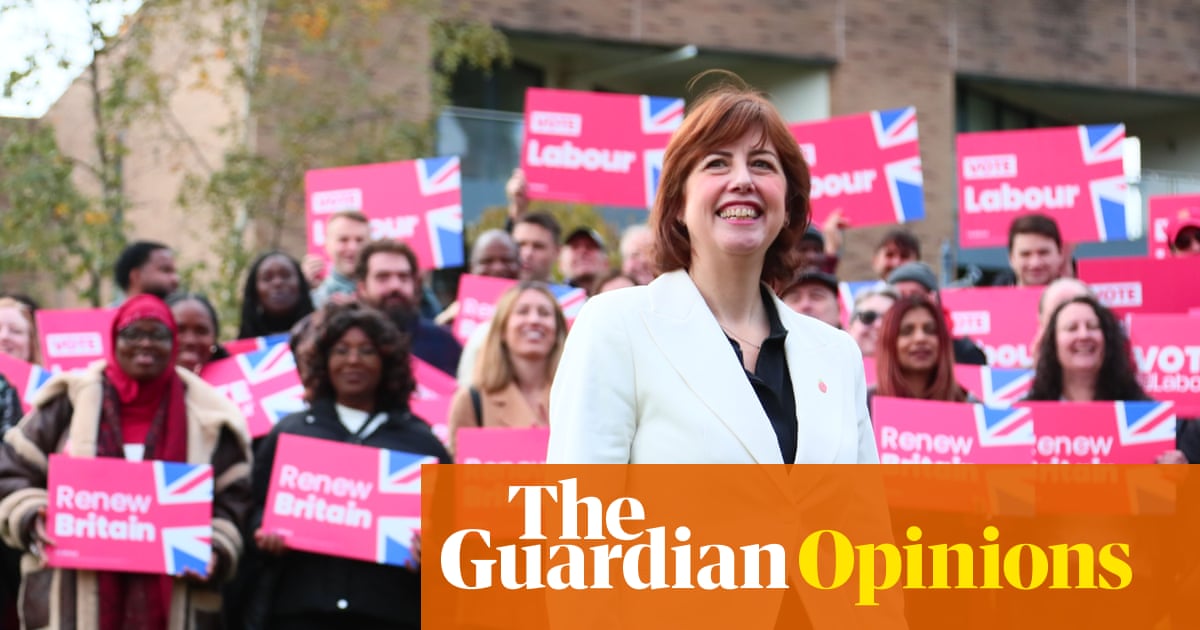On a windswept housing estate by the English Channel, Jacob Taylor surveys the latest addition to his property empire: a mixture of one-, two- and three-bedroom flats, built on the playing fields of an old private school.
They might not look like much but these neat rows of redbrick homes are an important acquisition – not for an offshore investor or a real-estate mogul, but for the Labour-run Brighton and Hove city council, where Taylor, its deputy leader, is taking a trailblazing approach.
“We are essentially rapidly buying properties from private landlords,” he says, walking through the plot in the Sussex village of Rottingdean, where Rudyard Kipling once lived.
In a plan agreed this month, the council is spending £50m to acquire 200 homes over the next two years, with the aim of replenishing its heavily depleted stock of social homes and temporary accommodation.
This is right to buy in reverse. Taking chunks of private property into public hands, Taylor aims to tackle a worsening housing and homelessness crisis in the seaside city, where as many as 10 more people are sleeping rough every week.
“The housing crisis is so bad in Brighton – we have near-London house prices but don’t have London wages,” he says. “It’s actually been getting worse in the last year, not better.
“You can’t underestimate the impact it’s having on people. As yet, I haven’t got enough homes versus the demand. But I am not going to put up with this disaster. I am determined to dramatically reduce the problem.”
Other councils, and the government, should take note. Housing shortages, spiralling rents, and the cost to local authorities of housing families in temporary accommodation – funnelling public money into the pockets of private landlords – are a massive national problem. In this all-encompassing economic and social crisis sweeping the country, Brighton is but a microcosm.
More than 1.3 million families in England are on social housing waiting lists, enough to fill every home in Lithuania. Their ranks have swelled by 37% since 2015, and a record 164,040 children are homeless and stuck in temporary accommodation, double the number in 2012. For the worst three councils, all in London, it would take more than a century to clear the housing register.
Brighton is fairly middle of the pack in the national picture, with about 5,000 households on its register. However, the wait is long enough that a child born today could finish secondary school without finding a council home.
David Chaffey, the chief executive of BHT Sussex, a social housing provider that also supports rough sleepers in Brighton and Hove, says the lack of affordable housing is causing untold social misery and strangling the local economy.
“You need to be able to have adequate housing for people to work in your local economy. Jobs can’t be filled. We have helped people who were working in a full-time job but living in their cars before they came to us, as they just can’t afford the rent here.”
When Rachel Reeves talks about “securonomics”, this is exactly what she means. Britain’s social foundations have been stripped bare, eroded by years of neoliberal policymaking, flatlining growth, and under-investment. Brighton’s story shows the scale of the challenge to overcome.
Above the windswept white cliffs, one cause of Brighton’s housing crisis is immediately clear. House prices and rents are well above average thanks in part to its fast train line to London, which makes it attractive to affluent City commuters. “DFLs, we call them,” Chaffey says. The acronym means “down from London”.
However, another cause is more pernicious: the erosion of the council’s housing stock under Margaret Thatcher’s right to buy scheme. Since 1980, more than a third of homes locally have been sold off. Many are now student HMOs (houses in multiple occupation) or are rented out by private landlords, often to tenants on housing benefit or in council-funded temporary accommodation.
“If you want to understand why we have huge swaths of the country where the housing market is totally broken, point to that [right to buy],” says Taylor.
Although it helped millions of families on to the housing ladder, the Thatcherite policy has been a disaster, costing taxpayers almost £200bn in one of the biggest transfers of public wealth to private hands in modern history.
Failure to replace these homes has not only deprived councils of stock to house today’s generation of families in need of support. Privatisation has embedded structurally higher housing costs for local authorities. Spending on housing has ballooned to more than £30bn, with about 90% going on housing benefit.

In Brighton the council expects to overspend its budget by about £3.8m on temporary accommodation this year, money Taylor says is flowing entirely to private landlords.
“It’s all a consequence of Thatcherism, plus austerity, and not being able to turn the tide on it properly.
“Our aim is to accelerate the increase in stock of social housing, but also to directly reduce the extreme costs of booking temporary accommodation with private landlords, which is pushing us to bankruptcy.”
At a national level, Labour’s plan to build 1.5m new homes will help. But it is increasingly in danger of failing to live up to its full billing. At risk of failure to meet the target, ministers could also sacrifice quality, affordability and targeting construction in the places in most need.
This could be problematic for Brighton. Wedged between the sea and the South Downs national park, development land here is scarce or costly. Taylor fears ministers – playing a numbers game – might prioritise places with lower development costs when allocating £39bn of funding that the government has earmarked to build a new generation of social homes.
However, bit by bit, the tide is ebbing in the opposite direction on the south coast, helped by reversing right to buy. Under its acquisition programme, Brighton and Hove is growing its housing stock for the first time in decades.
At a pace of about 100 acquisitions a year, progress is slow. “It’s not wiping out the register – we’re honest and acknowledge that,” Taylor says. Going faster would require Labour not just to build more homes, but to put more financial firepower into the Brighton model.

 5 hours ago
7
5 hours ago
7

















































